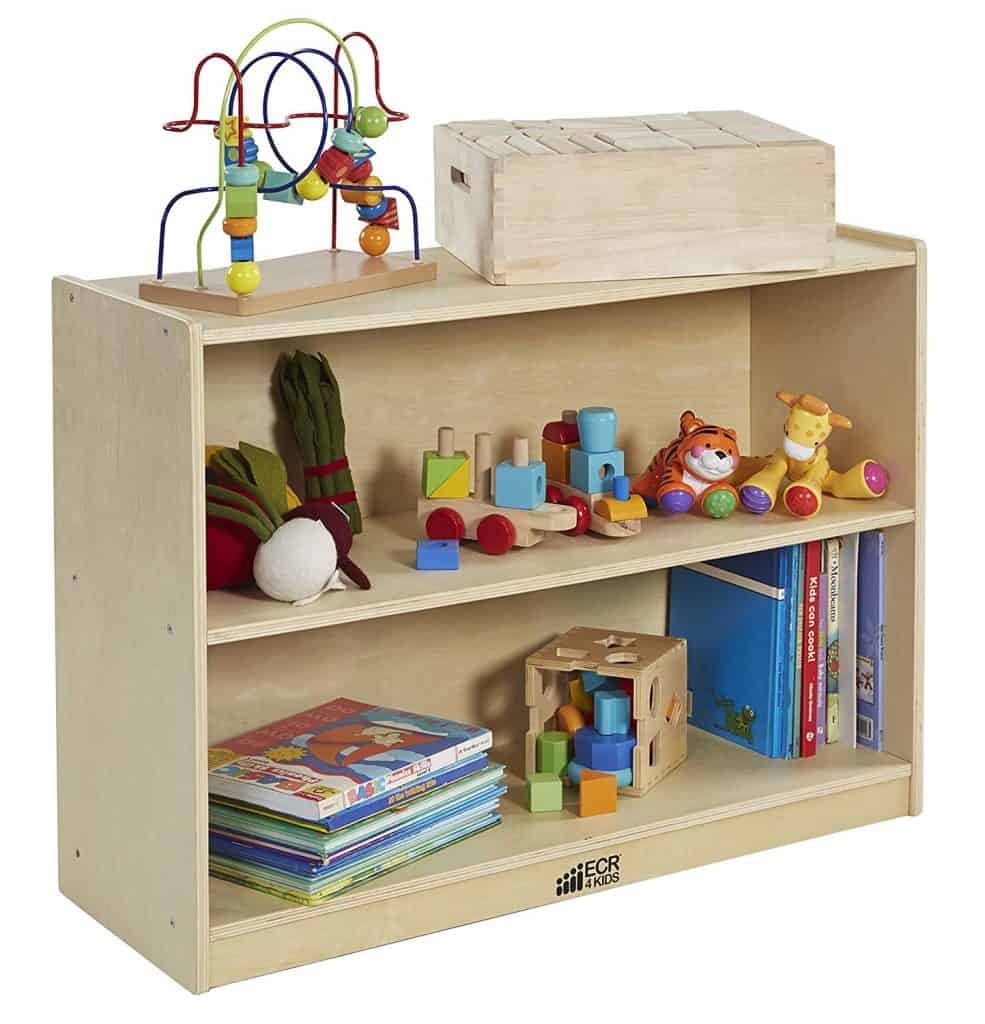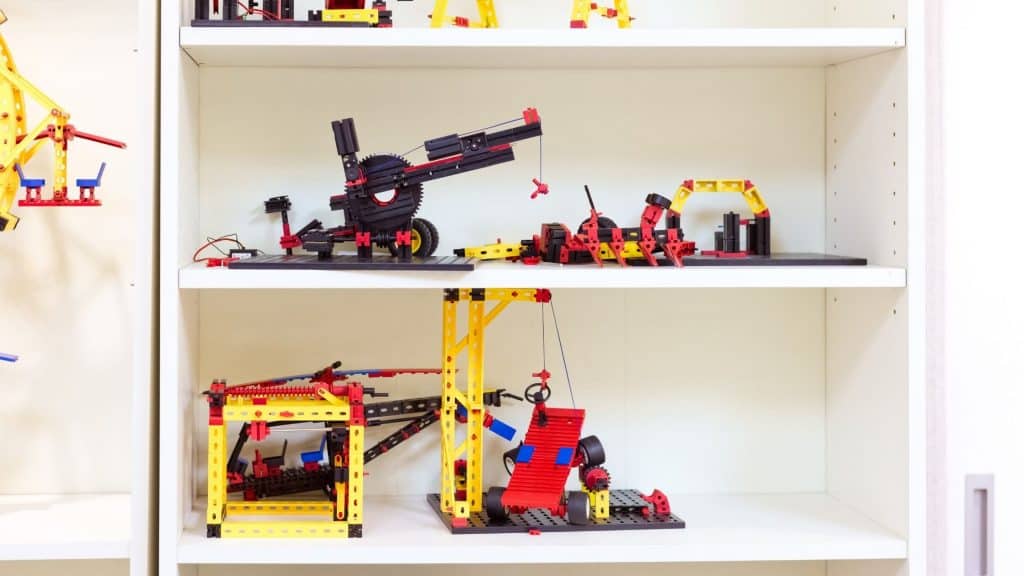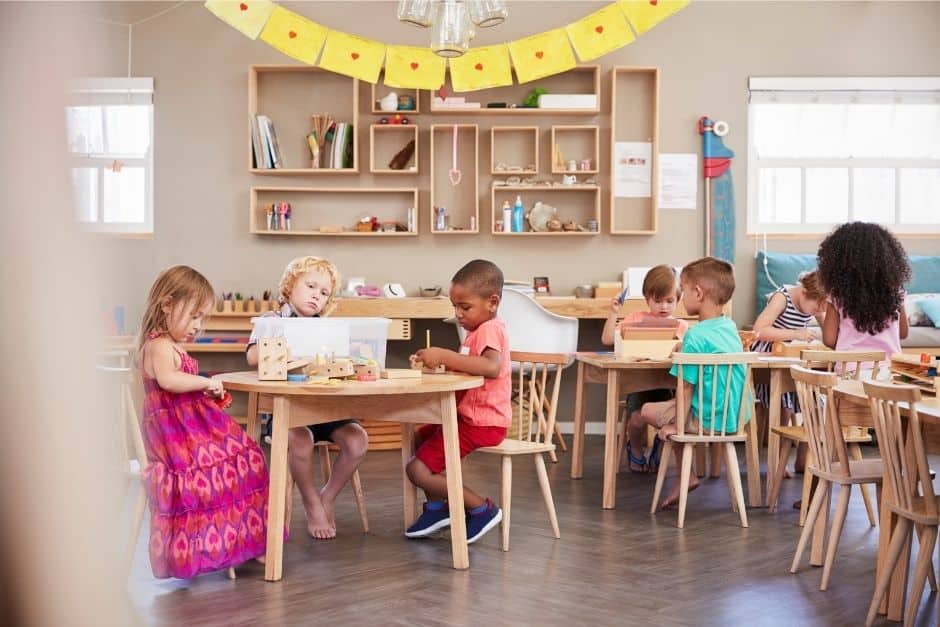You’re researching schools and learning methods for your precious little one and you’ve come across two very interesting methodologies: Montessori and STEM. They both have some similarities, and at the same time are so different.
As parents we want what’s best for our kids, and education is a top priority. So, when it comes to deciding which school or learning method to adopt we need to inform ourselves.
In this post, we are going to compare the Montessori method and the STEM approach. Is one better than the other or do they compliment each other?
Both the Montessori and STEM education methods will each teach your child skills that are absolutely vital to his well-being and success in life, but how exactly do each of them approach it is the question we will try to answer.
What are they? Can they work together? How are they different? Why are they important? Here are your answers:

What Is the Montessori Education Method?
Maria Montessori probably never dreamed that she would be the talk of every nursery ward in the civilized world, but she is. Montessori, an Italian doctor and educator has ended up revolutionizing the way children can learn building upon their natural skills in the right environment.
The Montessori method doesn’t only feed a child information to memorize but nurtures his need for respect, knowledge, and understanding.
In the Montessori education method a child leads and paces his own learning in a multi-age (three-year interval) classroom, fostered by teachers trained in the Montessori method, who assess and guide him along the way.
A Montessori school is a healthy environment, ripe for growth.

What Is the STEM Education Method?
The CoSTEM (Committee on STEM Education) is composed of thirteen agencies, like the US Department of Education and mission science agencies. They want to put federal funds into America’s K-12 STEM education, thereby helping boost the technological learning capabilities of next-generation education in the US.
STEM stands for Science, Technology, Engineering, and Math, and these are the areas of education that will fill the jobs in the upcoming decade and beyond.
STEM education begins in early youth, where the children are taught in a blended learning environment. The scientific method is applied to life as it happens every day.
Computational thinking is taught and there is a focus on real-world problem-solving applications.
What Are the STEAM, STEMM, and STREAM Education Methods?
Montessori and STEM are not the only education methods that people are talking about. These are some others:
STEAM
STEAM is STEM with Arts. STEAM stands for Science, Technology, Engineering, Math and Arts.
STEMM
STEMM is STEM with Music. STEMM stands for Science, Technology, Engineering, Math and Music.
STREAM
STREAM is STEM with Reading and Arts. STREAM stands for Science, Technology, Reading, Engineering, Arts and Math.
All learning is important, but STEM learning is vital to our way of life. While you can surely see the merit in STEAM or STEMM, the best and most well-rounded program of the three is, of course, STREAM, because music falls under the arts, and reading is of utmost importance, as it is vital to learning almost any skill.

How Can the STEM and Montessori Methods Work Together?
Historically, English, science, history, and math were each taught as separate entities, so if one subject was harder for you, you tended to shun it and focus on the others.
Subjects can be easier to understand when concepts are joined, and children seem to learn best by exploration and experimentation.
Montessori and STEM have the following in common:
- Your child can learn through experimentation.
- He will have the opportunity for discovery (hands-on).
- Your child can take part in self-led exploration.
- Both nurture practical skills, rooted in reality.
How Do the STEM and Montessori Methods Differ?
STEM and Montessori differ mostly only because STEM does not focus on reading or the arts, thus, you have the STREAM education method in some schools, but you can get the same or actually better results from marrying the Montessori method and the STEM method, as they are complimentary.
To reiterate, the STEM program focuses on science, technology, engineering, and math only, primarily, because that is where the need is found, and that is what the program is addressing.
The beauty comes along when it is melded with Montessori, which offers essentially everything that STEM does not.
Montessori offers reading. It offers arts and music. It offers play, like running, dancing around, and skipping.
Montessori offers to let the child lead the way and say – hey, I want to do this right now, or I want to take this and do this with it to see if it will work.
They are different, but they fit together like a two-piece puzzle.
Why Do the Montessori and STEM Methods Matter For Your Child’s Education?
If you walk into a Montessori classroom, you will see some children:
- Cooking and eating
- Sweeping and cleaning
- Gardening
- Computing
- Composing
- Publishing
- Managing business affairs
These are some things that our youth need desperately to know as they grow up but that our education system has historically neglected. Montessori, or particularly the marriage of the two programs could be revolutionary in raising up a generation of children who show newfound respect for themselves, others, and their country.
You will see that they are:
- Sharing
- Celebrating
- Joyful
- Comfortable
- Organized
- Engaged
- Loved
- Accountable
- Excited
- Compassionate
- Welcome
These are traits that are desperately needed within our children today. We need to grow up a generation of children who are healthy emotionally, as well as physically.
In a Montessori classroom, the way a child physically moves and actively explores his environment is key to his learning. So, Montessori makes him more likely to be in a position to grasp the more complex nuances of the STEM method at a younger age; this, then, places him onto a career path as an adult that falls within the STEM areas of industry.
Vikki is the creator of Totsgo and the mother of two children. She is a passionate mother who enjoys assisting other parents.
